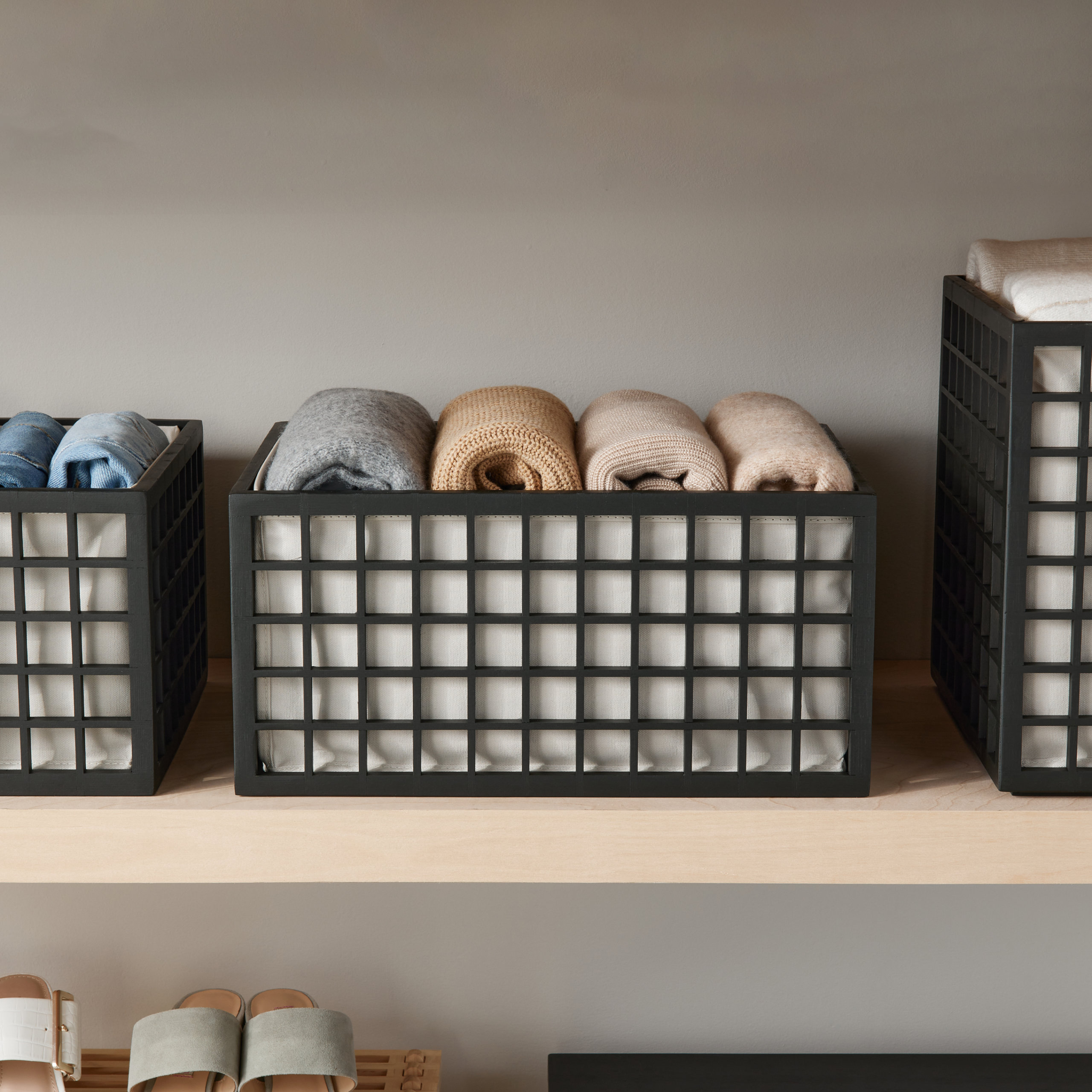How to Store Winter Clothing


It’s in the air: spring is coming soon. Finally. And that begs the question: What to do with all those heavy winter coats, chunky knits and pop-colored scarves?
In celebration of warmer weather ahead, we spoke with two KonMari Consultants, Charmaine Nichols and Lisbet Byler, for their advice on organizing and storing winter clothing the KonMari way. Here is their step-by-step guide.
Check in with Your Joy
Before reorganizing your closet for a change of season, revisit your clothing. Do all your winter items still spark joy? Are there worn-out socks or lost gloves that need replacing?
“Rotating your seasonal clothing is the perfect time to check in,” says Lisbet. “Perhaps the items that brought you joy last spring or summer no longer do. That’s okay! Thank them and let them go with gratitude.”
For more, read our guide to mindfully discarding clothing.

Clean and Repair Before Storing
Next, give winter clothing some thoughtful care. Wash or dry clean coats and sweaters, replace lost buttons and repair tears. Doing so expresses gratitude for the items that kept you warm through the coldest season.
“Cleaning also prevents smelly clothes from attracting bugs and keeps stains and odors from setting in,” says Charmaine. “Just make sure they are fully dried [before storing] to prevent mildew!”
Move Clothing Up or Back, But Not Out
Once winter items are cleaned and repaired, they’re ready to organize. Of important note: the KonMari Method™ recommends that you don’t store winter clothes out of sight in a garage or basement. Instead, as the seasons change, move out-of-season items to higher shelves or into the back of your closet.
“After decluttering and choosing to keep only items that spark joy, the KonMari Method encourages us to store all of our clothing together in our main closets and drawers regardless of seasonality,” says Charmaine. “This approach helps us grasp what clothes we have year-round, so we don’t forget about them.”
That said, you’ll want to rotate clothing, so your spring-friendly items are easy to reach.
“I like to keep my winter accessories like gloves, scarves and hats in open bins on lower shelves during the cold months,” says Lisbet. “When the weather warms up, I move those bins to higher or less accessible shelves or drawers, then bring down my spring and summer accessories like bathing suits and shorts.”
Tidy Tip: If you simply don’t have enough space in your closet, there are alternative options for storing winter clothing. We’ll cover that in Step 05.
Fold, Compress and Store
“Use breathable fabric cubes or bags to store clothes on a top shelf,” says Charmaine. “Clothing needs to breathe, and breathable storage also decreases wrinkles. You’ll also want to press down or deflate bulky knits to store them in a more compact space,” Charmaine says.
“Fold clothing using the KonMari fold, and if using storage bags, press down to eliminate air to make them even smaller,” says Lisbet.
Then, slide your bins on those top shelves. “Don’t forget to label the bins that may be too high to see, so you know exactly what’s what!”
Tidy Tip: Charmaine recommends adding lavender sachets, dryer sheets or small cedar blocks to your storage containers. This will keep clothing fresh until next year.

Alternatives for Small Spaces
Admittedly, some closets are simply too small to accommodate everything. If you’ve completed a tidying festival but still struggle to fit all your clothing in one closet, Charmaine and Lisbet have a few solutions.
First, try taking advantage of underused areas in your closet or bedroom. “Add an additional shelf near the top of a closet or above a door, if possible,” says Charmaine, “or purchase a garment rack for easy reach.” You might also try using bags instead of bins, says Lisbet. “You can fit clothing in places a structured bin may not be able to.”
If you must store winter clothing elsewhere, try to put everything in one place so you don’t lose track of it. Lisbet also recommends setting a reminder in your phone for when to rotate your wardrobe next year. In it, add a description of where and what you stored, so you won’t forget!
Tidy tip: Skip the breathable storage if you have to store clothing in a basement or garage. “If clothing must be stored in a damp environment, such as a basement floor, use airtight plastic containers to keep the moisture out,” Charmaine says.
***
Above all, our KonMari experts recommend creating a process that sparks joy for you. Light some incense before starting, thank your clothing for keeping you warm through another winter and welcome a new season with lighter clothing in reach. For more, read our guide to starting a spring cleaning ritual.
We would like to thank all our KonMari Consultants for being a constant source of wisdom about the Method. Special thanks to Charmaine and Lisbet for working with us on this story.







